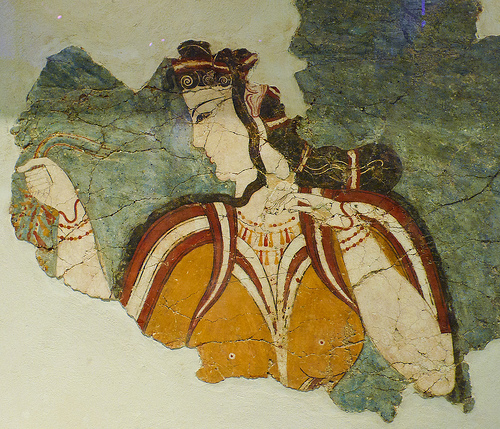Grilling food the ancient Greek way

3,000 years ago, the Mycenaean civilization didn't just build elaborate palaces and create impeccably trained warriors, they also cooked elaborate dishes in the field. Recent archaeological investigation has turned up some interesting information on how the ancient Mycenaeans grilled souvlaki and baked bread on the go, as part of elaborate outdoor festivals and parties.
The researchers focused on two ceramic cooking implements whose use had remained mysterious. One was a rectangular pan with shallow sides that held skewers. The other was a large round griddle which had one smooth side and one side that was dimpled with tiny holes like a golf ball.
Archaeologists had long debated about how these tools were used. One group of intrepid researchers built exact replicas, and tried them out. (It seems obvious in hindsight.)
Some people thought the shallow tray was used to catch dripping fat, and that the entire thing would be placed inside a pit barbecue to cook the skewers. But the researchers found that it didn't get hot enough to cook the meat, which remained raw.
Their next experiment worked perfectly: they carefully shoveled hot coals into the bottom of the pan, and suspended the meat on skewers inches above the coals. This created enough heat to nicely cook the meat, and basically worked like an ancient Greek version of the classic hibachi grill.
As for the griddle, no one knew which side was up. The researchers baked bread on both sides, and observed the results. They found that the bread stuck to the smooth side, but the loaves slid right off the dimpled side of the grill. The dimpled texture created perfect distribution of oil, and acted as a non-stick surface.
Versions of these cooking implements were common in Mycenaean kitchens, which suggests that the upper class Mycenaeans often enjoyed open-air meals, picnics featuring fresh-baked bread and freshly grilled souvlaki. Yum!
Image courtesy Flickr/Xuan Che

1 comments